Ultimate Everest - The #1 Guide Service to Everest Base Camp
Altitude Acclimatization
The Himalayan Mountain Range has the world's tallest peaks. In fact, there are over one hundred mountains that are taller than 23,600 feet. Mount Everest is 29,029 feet tall. Annapurna is 26,545 feet tall. Trekking around these peaks brings you to extremely high elevations. Feeling the affects of altitude, therefore, is very common. Everyone trekking in Nepal should be familiar with the symptoms of altitude sickness.
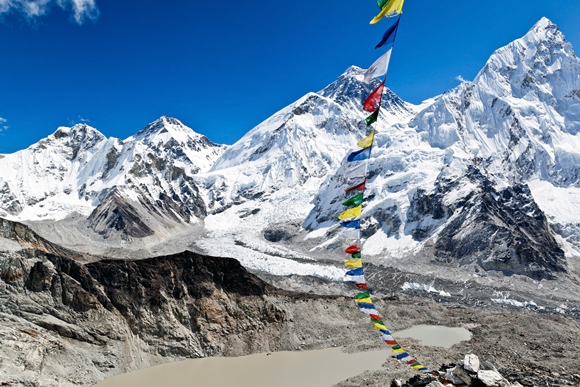
Acute Mountain Sickness (AMS)
The percentage of oxygen in the atmosphere at sea level is about 21%. As altitude increases, the percentage remains the same but the number of oxygen molecules per breath is reduced. At 12,000 feet (3,600 m) there are roughly 40% fewer oxygen molecules per breath so the body must adjust to having less oxygen. AMS is caused by the failure of the body to adapt quickly enough to the reduced oxygen at increased altitudes. Altitude sickness can occur in some people as low as 8,000 feet, but serious symptoms do not usually occur until over 12,000 feet. It is not the height that is most troublesome, but the rate of ascension. It is difficult to determine who may be affected by altitude sickness since there are no specific factors such as age, sex, or physical condition that correlate with susceptibility.
At over 10,000 feet (3,000 m), more than 75% of climbers will experience at least some form of mild AMS.
There are four factors related to AMS:
- High Altitude
- Fast Rate of Ascent
- High Degree of Extertion
- Dehydration
The main cause of altitude sickness is going too high (altitude) too quickly (rate of ascent). Given enough time, your body will adapt to the decrease in oxygen at a specific altitude. This process is known as acclimatization and generally takes one to three days at any given altitude. Several changes take place in the body which enable it to cope with decreased oxygen:
- The depth of respiration increases
- The body produces more red blood cells to carry oxygen
- Pressure in pulmonary capillaries is increased, "forcing" blood into parts of the lung which are not normally used when breathing at sea level
- The
body produces more of a particular enzyme that causes the release of oxygen
from hemoglobin to the body tissues
Again,
AMS is very common at high altitude. Many people will experience mild AMS
during the acclimatization process. The symptoms usually start 12 to 24
hours after arrival at altitude and will normally disappear within 48 hours.
The symptoms of Mild AMS include:
- Headache
- Nausea & Dizziness
- Loss of appetite
- Fatigue
- Shortness of breath
- Disturbed sleep
- General
feeling of malaise
Symptoms tend to be worse at night and when respiratory drive is decreased. Mild AMS does not interfere with normal activity and symptoms generally subside as the body acclimatizes. As long as symptoms are mild, and only a nuisance, ascent can continue at a moderate rate.
While hiking, it is essential that you communicate any symptoms of illness immediately to others on your trip.
The
signs and symptoms of Moderate AMS include:
- Severe headache that is not relieved by medication
- Nausea and vomiting, increasing weakness and fatigue
- Shortness of breath
- Decreased
coordination (ataxia)
Normal activity is difficult, although the person may still be able to walk on their own. At this stage, only advanced medications or descent can reverse the problem. It is important to get the person to descend before the ataxia reaches the point where they cannot walk on their own (which would necessitate a stretcher evacuation). Descending only 1,000 feet (300 m) will result in some improvement, and 24 hours at the lower altitude will result in a significant improvement. The person should remain at lower altitude until all the symptoms have subsided. At this point, the person has become acclimatized to that altitude and can begin ascending again.
Continuing
on to higher altitude while experiencing moderate AMS can lead to death.
Severe
AMS results in an increase in the severity of the aforementioned symptoms
including:
- Shortness of breath at rest
- Inability to walk
- Decreasing mental status
- Fluid
build-up in the lungs
Severe
AMS requires immediate descent of around 2,000 feet (600 m) to a lower altitude.
There are two serious conditions associated with severe altitude sickness;
High Altitude Cerebral Edema (HACE) and High Altitude Pulmonary Edema (HAPE).
Both of these happen less frequently, especially to those who are properly
acclimatized. But, when they do occur, it is usually in people going too
high too fast or going very high and staying there. In both cases the lack
of oxygen results in leakage of fluid through the capillary walls into either
the lungs or the brain.
High Altitude Pulmonary Edema (HAPE)
HAPE results from fluid build up in the lungs. This fluid prevents effective oxygen exchange. As the condition becomes more severe, the level of oxygen in the bloodstream decreases, which leads to cyanosis, impaired cerebral function, and death. Symptoms of HAPE include:
- Shortness of breath at rest
- Tightness in the chest
- Persistent cough bringing up white, watery, or frothy fluid
- Marked fatigue and weakness
- A feeling of impending suffocation at night
- Confusion, and irrational behavior
Confusion, and irrational behavior are signs that insufficient oxygen is reaching the brain. In cases of HAPE, immediate descent of around 2,000 feet (600 m) is a necessary life-saving measure. Anyone suffering from HAPE must be evacuated to a medical facility for proper follow-up treatment.
High Altitude Cerebral Edema (HACE)
HACE
is the result of the swelling of brain tissue from fluid leakage. Symptoms
of HACE include:
- Headache
- Weakness
- Disorientation
- Loss of co-ordination
- Decreasing levels of consciousness
- Loss of memory
- Hallucinations & Psychotic behavior
- Coma
This condition is rapidly fatal unless the afflicted person experiences immediate descent. Anyone suffering from HACE must be evacuated to a medical facility for follow-up treatment.
Proper Acclimatization Guidelines
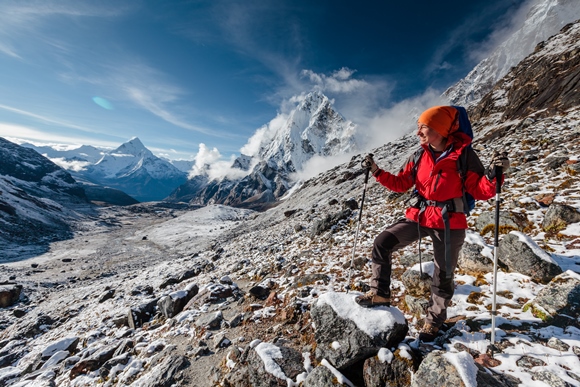
The following are recommended to achieving acclimatization:
- Pre-acclimatize prior to your trip by using a high altitude training system.
- Ascend Slowly. Because it takes time to acclimatize, your rate of ascent should be slow. Gradual climbing will increase your chances feeling good, and getting some enjoyment out of the experience.
- Do not overexert yourself. Mild exercise may help altitude acclimatization, but strenuous activity may promote HAPE.
- Take slow deliberate deep breaths.
- Climb high, sleep low. Climb to a higher altitude during the day, then sleep at a lower altitude at night. Most routes comply with this principle and additional acclimatization hikes can be incorporated into your itinerary.
- Eat enough food and drink enough water while on your climb. It is recommended that you drink from four to five liters of fluid per day. Also, eat a high calorie diet while at altitude, even if your appetite is diminished.
- Avoid tobacco, alcohol and other depressant drugs including, barbiturates, tranquillizers, sleeping pills and opiates. These further decrease the respiratory drive during sleep resulting in a worsening of altitude sickness.
- If you begin to show symptoms of moderate altitude sickness, don't go higher until symptoms decrease. If symptoms increase, descend.
Our guides are all experienced in identifying altitude sickness and dealing with the problems it causes with climbers. They will constantly monitor your well-being on the climb by watching you and speaking with you. Twice daily, our guides will conduct tests with a pulse oximeter to measure your oxygen saturation and pulse rate. Additionally, our guides will administer the Lake Louise Scoring System (LLSS) to help determine whether you have any symptoms of altitude sickness and the severity.
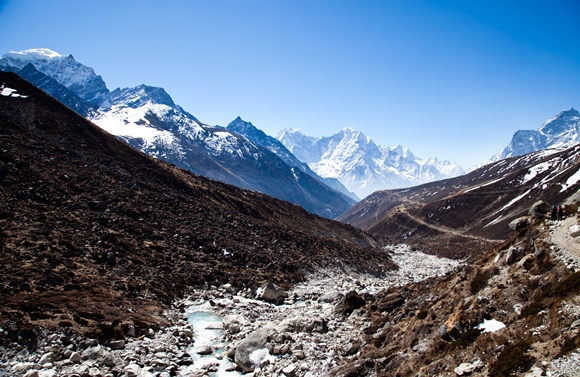
It is important that you be open, active and honest with your guide. If you do not feel well, do not try to pretend you are fine. Do not mask your symptoms and say you feel OK. Only with accurate information can your guide best treat you.
Of course, there is always the chance that you will have to turn around on your trek. In these situations, the guide will tell you to descend. It is not a request, but an order. The guide's decision is final. Do not try to convince him with words, threats or money to continue your climb. The guide wants you to succeed on your climb, but will not jeopardize your health. Respect the decision of the guide.
Pulse Oximeter
 A pulse oximeter is a medical device that measures the oxygen level in your blood and your pulse rate. The oximeter that we use is placed on a person's fingertip. The oximeter uses two beams of light that shine into small blood vessels and capillaries in your finger. The sensor reflects the amount of oxygen in the blood.
A pulse oximeter is a medical device that measures the oxygen level in your blood and your pulse rate. The oximeter that we use is placed on a person's fingertip. The oximeter uses two beams of light that shine into small blood vessels and capillaries in your finger. The sensor reflects the amount of oxygen in the blood.
Oxygen saturation is a measurement of how much oxygen your blood is carrying as a percentage of the maximum it could carry. Normal blood oxygen levels at sea level are 95-100%.
Diamox
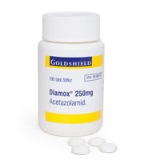 Diamox
(generic name acetazolamide) is an F.D.A. approved drug for the prevention
and treatment of AMS. The medication acidifies the blood, which causes an
increase in respiration, thus accelerating acclimatization. Diamox does
not disguise symptoms of altitude sickness, it prevents it. Studies have
shown that Diamox at a dose of 250 mg every eight to twelve hours before
and during rapid ascent to altitude results in fewer and/or less severe
symptoms of acute mountain sickness (AMS). The medicine should be continued
until you are below the altitude where symptoms became bothersome. Side
effects of acetazolamide include tingling or numbness in the fingers, toes
and face, taste alterations, excessive urination; and rarely, blurring of
vision. These go away when the medicine is stopped. It is a personal choice
of the climber whether or not to take Diamox as a preventative measure against
AMS.
Diamox
(generic name acetazolamide) is an F.D.A. approved drug for the prevention
and treatment of AMS. The medication acidifies the blood, which causes an
increase in respiration, thus accelerating acclimatization. Diamox does
not disguise symptoms of altitude sickness, it prevents it. Studies have
shown that Diamox at a dose of 250 mg every eight to twelve hours before
and during rapid ascent to altitude results in fewer and/or less severe
symptoms of acute mountain sickness (AMS). The medicine should be continued
until you are below the altitude where symptoms became bothersome. Side
effects of acetazolamide include tingling or numbness in the fingers, toes
and face, taste alterations, excessive urination; and rarely, blurring of
vision. These go away when the medicine is stopped. It is a personal choice
of the climber whether or not to take Diamox as a preventative measure against
AMS.
Ultimate Expeditions® neither advocates nor discourages the use of Diamox (see Diamox: Does it Mask AMS?).
Ibuprofen
Ibuprofen
can be used to relieve altitude induced headaches.
Bottled Oxygen
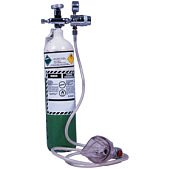 We carry bottled
oxygen on our peak climbs (Island Peak) as a precaution and additional safety measure.
The oxygen cannister is for use only in emergency situations. It is NOT used to assist clients
who have not adequately acclimatized on their own to climb higher.
We carry bottled
oxygen on our peak climbs (Island Peak) as a precaution and additional safety measure.
The oxygen cannister is for use only in emergency situations. It is NOT used to assist clients
who have not adequately acclimatized on their own to climb higher.
The most immediate treatment for moderate and serious altitude sickness is descent. Therefore, oxygen is used strictly to treat a stricken climber, when necessary, in conjunction with descent, to treat those with moderate and severe altitude sickness.